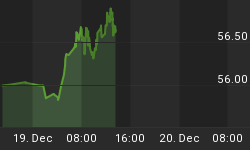The global economy has become so unbalanced that even government ministers who would normally have trouble explaining supply or demand clearly recognize that something has to give. To a very large extent the distortions are caused by China's long-standing policy of pegging its currency, the yuan, to the U.S. dollar. But as China's economy gains strength, and the American economy weakens, the cost and difficulty of maintaining the peg become ever greater, and eventually outweigh the benefits that the policy supposedly delivers to China. In the first few weeks of 2011 fresh evidence has arisen that shows just how difficult it has become for Beijing.
Twenty years ago, China's leaders decided to ditch the disaster of economic communism in favor of privatized, export-focused, industry. The plan largely worked. Over that time, China has arguably moved more people out of poverty in the shortest amount of time in the history of the planet. But somewhere along the way, China's leaders became addicted to a game plan that outlived its usefulness.
In order to maintain the peg, China must continually buy dollars on the open market. But the weaker the dollar gets, the more dollars China must buy. And with the U.S. Federal Reserve pulling out all the stops to create inflation and push down the dollar, Beijing's task becomes nearly impossible. Last week, it was announced that China's foreign exchange reserves, the amount of foreign currency held at its central bank (mostly in U.S. dollars), increased by a record $199 billion in 4th quarter 2010, to reach $2.85 trillion. These reserves currently account for a staggering 49% of China's annual GDP (if the same proportional amount were held by the U.S., our measly $46 billion in reserves would have to increase 163 times to $7.5 trillion).
In order to buy these dollars, the Chinese central bank must print its own currency. In essence, China is adopting the Fed's expansionary monetary policy. In the U.S. the inflationary impact of such a strategy is mitigated by our ability to export paper dollars in exchange for inexpensive Chinese imports. Although prices are rising here, they are not rising nearly as much as they would if we had to spend all this newly printed money on domestically produced goods. The big problem for China is that, unlike the U.S., the newly printed yuan are not exported, but remain in China bidding up consumer prices. As a result, inflation is becoming China's dominant political issue.
It was recently announced that in November China's consumer price index rose 5.1% from the same time a year earlier, with food prices rising more than 10%. As unrest builds, the Chinese government has unleashed a series of policies to address the symptoms of the disease while ignoring its root cause.
For the remainder of this article, plus a more detailed analysis of global food inflation by Michael Pento and articles on other investment topics, please see the latest edition of Euro Pacific's The Global Investor Newsletter.
Peter Schiff is CEO of Euro Pacific Capital and host of The Peter Schiff Show















